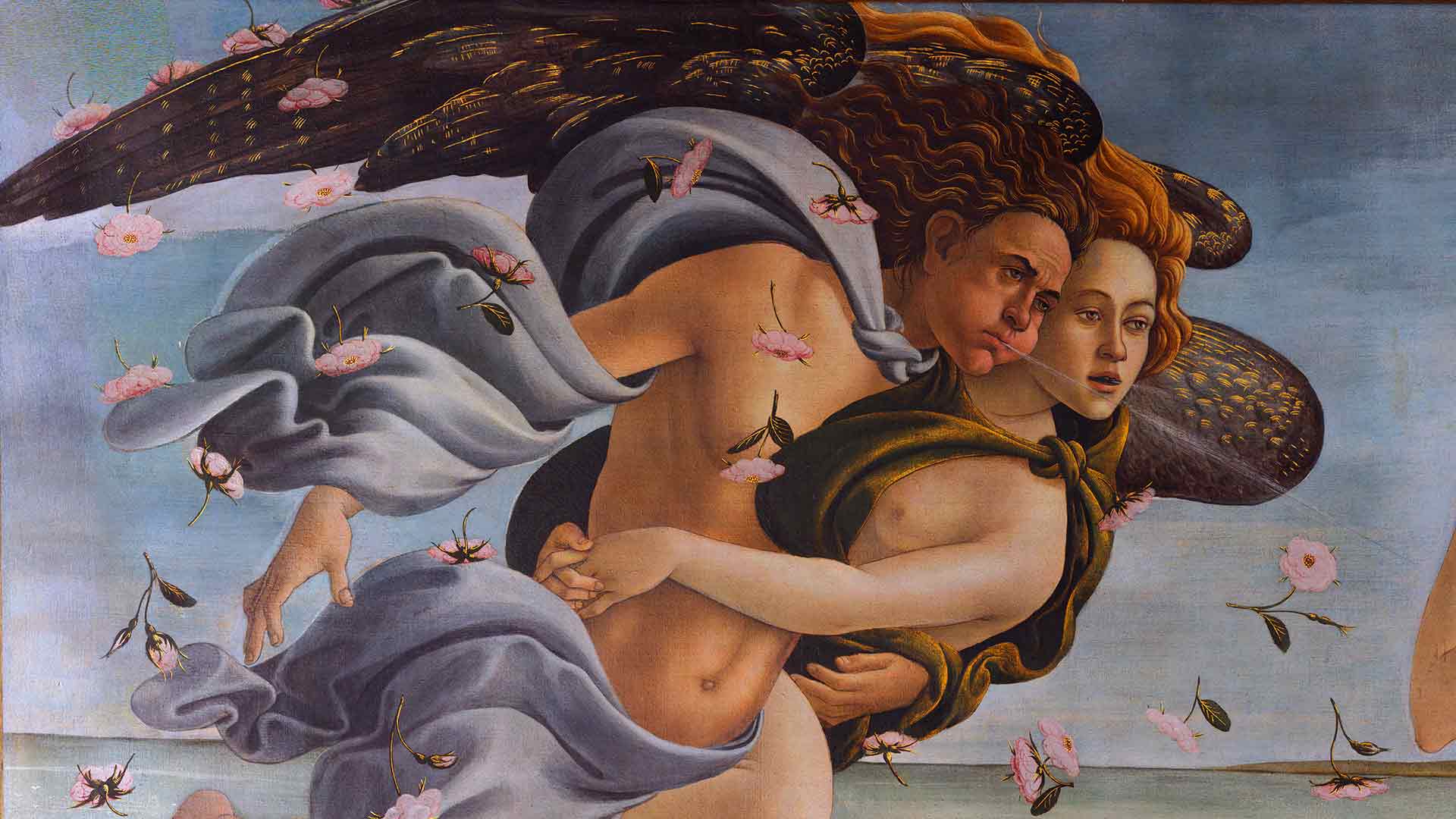

![]() Renaissance, (French: “Rebirth”) (c. 1400 – 1600)
period in European civilization immediately following
the Middle Ages and conventionally held to
have been characterized by a surge of interest
in Classical scholarship and values.
Renaissance, (French: “Rebirth”) (c. 1400 – 1600)
period in European civilization immediately following
the Middle Ages and conventionally held to
have been characterized by a surge of interest
in Classical scholarship and values.
The Renaissance also witnessed the
discovery and exploration of new continents,
the substitution of the Copernican
for the Ptolemaic system of astronomy,
the decline of the feudal system
and the growth of commerce,
and the invention or application of
such potentially powerful innovations as
paper, printing, the mariner’s compass, and gunpowder.
To the scholars and thinkers of the day,
however, it was primarily a time of
the revival of Classical learning and wisdom
after a long period of cultural decline and stagnation.
—![]() Britannica.com
Britannica.com
The Renaissance - The Age of Michelangelo and Leonardo da Vinci
Beginning at the end of the 14th Century, the Renaissance created a new type of man, triggering economic, scientific, technical, religious, social and cultural developments that are unique in history.
![]() Renaissance Art is marked by a gradual shift
from the abstract forms of the medieval period
to the representational forms of the 15th century.
Subjects grew from mostly biblical scenes
to include portraits, episodes from Classical religion,
and events from contemporary life.
Human figures are often rendered in dynamic poses,
showing expression, using gesture,
and interacting with one another...
Renaissance art from Northern Europe emphasized
precise detail as a means of achieving a realistic work.
Renaissance Art is marked by a gradual shift
from the abstract forms of the medieval period
to the representational forms of the 15th century.
Subjects grew from mostly biblical scenes
to include portraits, episodes from Classical religion,
and events from contemporary life.
Human figures are often rendered in dynamic poses,
showing expression, using gesture,
and interacting with one another...
Renaissance art from Northern Europe emphasized
precise detail as a means of achieving a realistic work.
The first four main artists (bookmarks) are presented on this page (so far):
For more artists and/or resources:
oogle
Renaissance Artist List
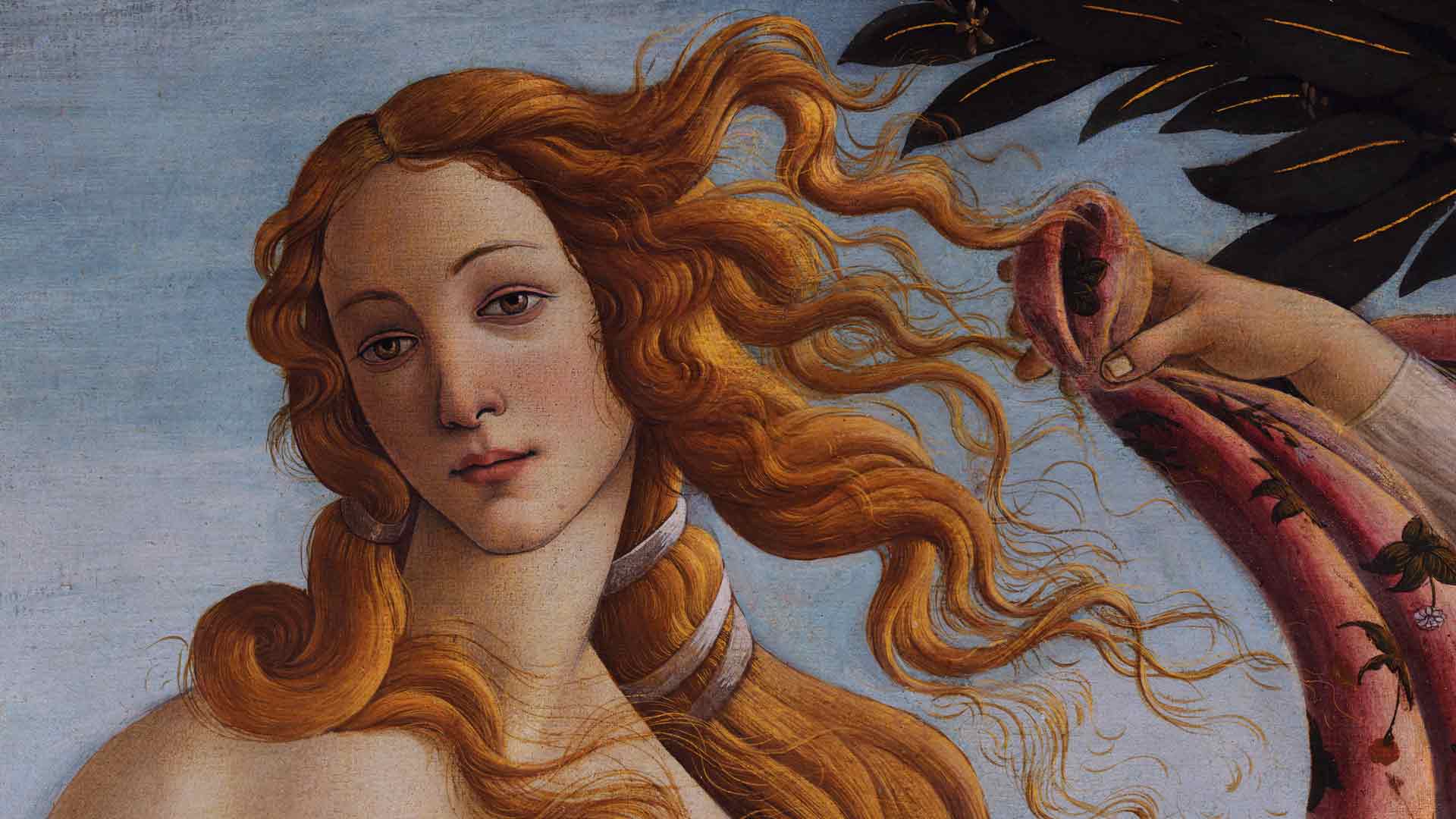
(born 1445, Florence [Italy] —died May 17, 1510, Florence)
...one of the greatest painters of the Florentine Renaissance.
The Birth of Venus
and La Primavera
are often said to epitomize
for modern viewers the spirit of the Renaissance...
—![]() Britannica.com
Britannica.com
 Botticelli
...painted mythological and religious subjects, many of
which were composed of the Madonna and Child.
—
Botticelli
...painted mythological and religious subjects, many of
which were composed of the Madonna and Child.
—


The Birth of Venus │ tempera on canvas, 1484–86, by Sandro Botticelli, Uffizi Gallery, Florence, Italy. This painting honors love, birth, and virtue. (Left) Zephyros and Chloris or Aura(?), god of the west wind and goddess of the season blow (Center) Venus, born from the sea as goddess of love and beauty, safely to the shore on a seashell. To protect her modesty as she arrives, she is draped and clothed in flowers by {Right) Flora, goddess of Spring. — Uffizi Gallery │ 360°
For eveloving ideas of beauty, see Aesthetics: The Philosopy of Beauty and Taste.
Dr. Steven Zucker and Dr. Beth Harris
Smarthistory
Course: AP®︎/College Art History
Italy in the 15th Century:
Early Renaissance
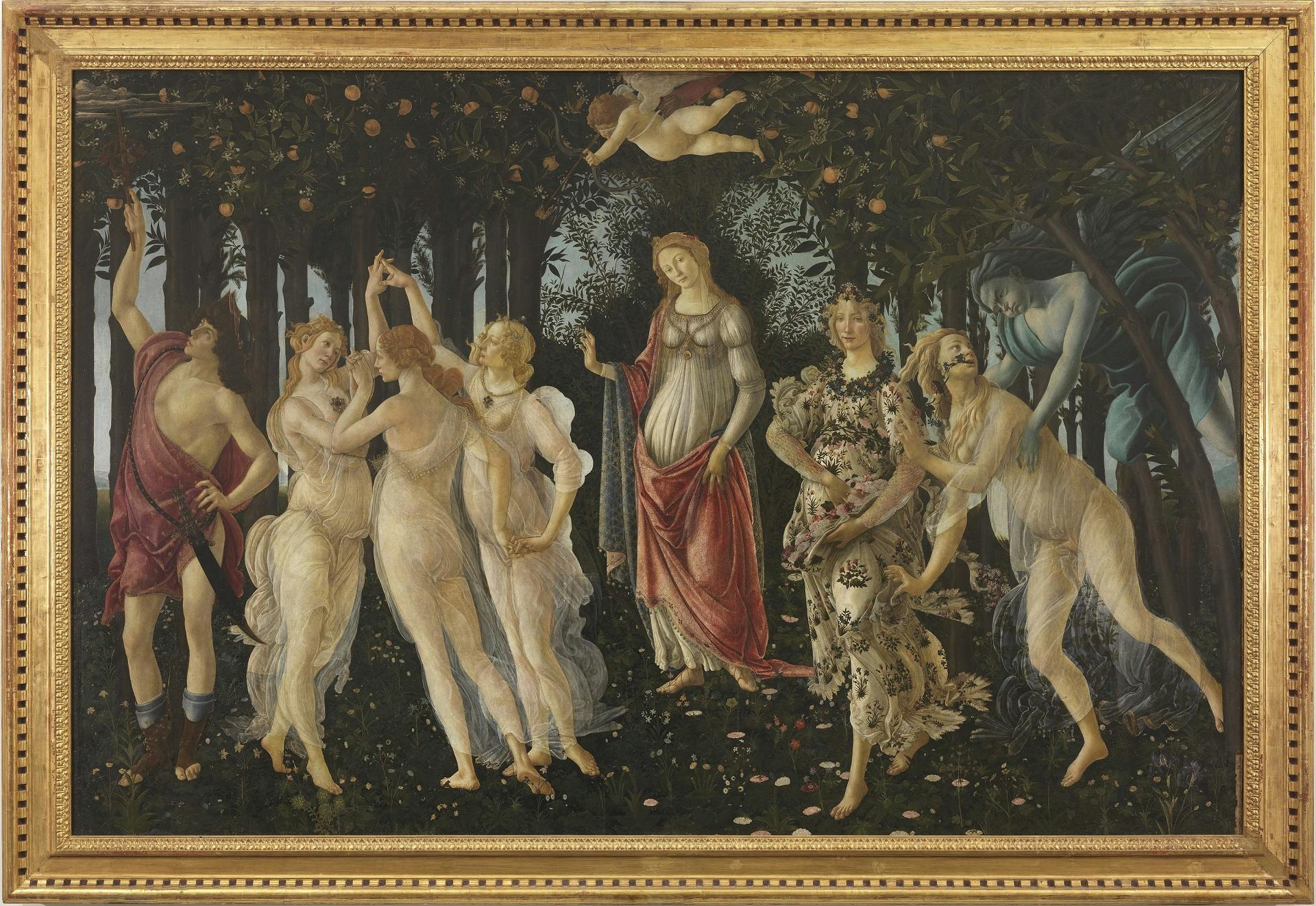
Primavera usually known as the Primavera [or ‘Spring’] shows nine figures from classic mythology advancing over a flowery lawn in a grove of orange and laurel trees. In the foreground, to the right, Zephyrus embraces a nymph named Chloris before taking her; she is then portrayed after her transformation into Flora, the spring goddess. The centre of the painting is dominated by the goddess of love and beauty, Venus, chastely dressed and set slightly back from the others, and by a blindfolded Cupid, firing his arrow of love.
On the left, the three Graces, minor goddesses with virtues like those of Venus, are shown dancing in a circle. The composition is closed by Mercury, messenger of the Gods, recognisable from his helmet and winged sandals, as he touches a cloud with his staff.
Although the complex meaning of the composition remains a mystery, the painting is a celebration of love, peace, and prosperity. The dark colour of the vegetation is in part due to the ageing process of the original pigment, but is lightened by the abundance of fruits and flowers. At least 138 species of different plants have been identified, all accurately portrayed by Botticelli, perhaps using herbaria. The attention to detail confirms the artist’s commitment to this piece, which is also evident in the sheer skill with which the paint has been applied. — Uffizi Gallery │ 360°
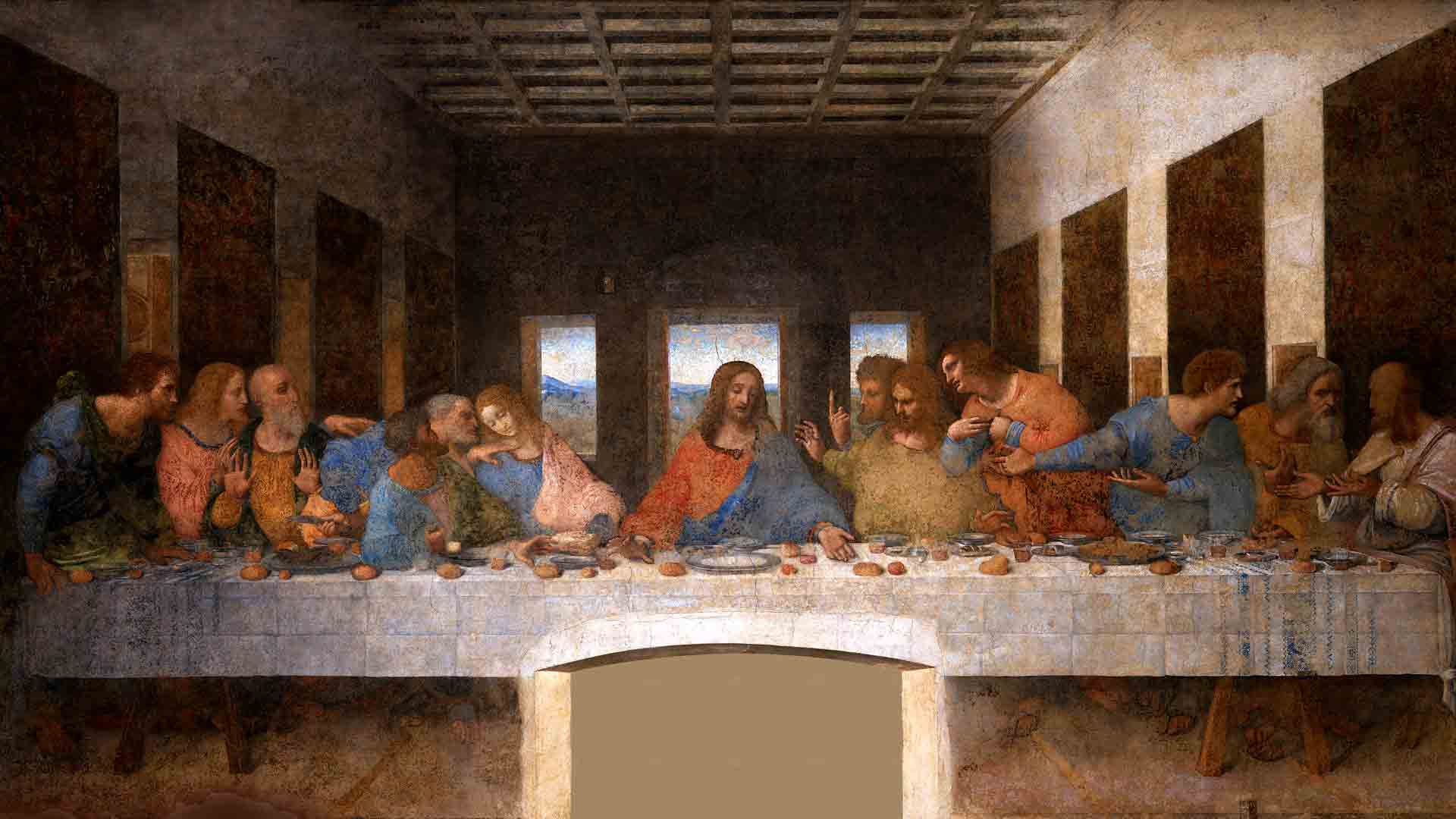
(born April 15, 1452, Anchiano, near Vinci, Republic of Florence [Italy] —died May 2, 1519, Cloux [now Clos-Lucé], France)
Leonardo da Vinci │ (Italian: “Leonardo from Vinci”) Italian painter, draftsman, sculptor, architect, and engineer whose skill and intelligence, perhaps more than that of any other figure,
...epitomized the Renaissance humanist ideal.
His Last Supper
(1495–98) and Mona Lisa
(c. 1503–19)
are among the most widely popular and
influential paintings of the Renaissance.
His notebooks reveal a spirit of scientific inquiry
and a mechanical inventiveness that were centuries ahead of their time.
—
![]() Britannica.com
Britannica.com

is among the most famous paintings in the world. In its monumental simplicity, the composition of the scene is masterful; the power of its effect comes from the striking contrast in the attitudes of the 12 disciples as counterposed to Christ. Leonardo portrayed a moment of high tension when, surrounded by the Apostles as they share Passover, Jesus says, “One of you will betray me.”
All the Apostles—as human beings who do not understand what is about to occur—are agitated,
whereas Christ alone, conscious of his divine mission, sits in lonely, transfigured serenity.
Only one other being shares the secret knowledge:
—
![]() Britannica.com
Britannica.com
Decoding da Vinci | Full Documentary | NOVA | PBS
Discover the science behind Leonardo da Vinci's masterpieces—and Mona Lisa's iconic smile.
A smile at the limit of the softness of the goodness of the grimace of Jesus.
You can tell a story about this work.
—Musée du Louvre

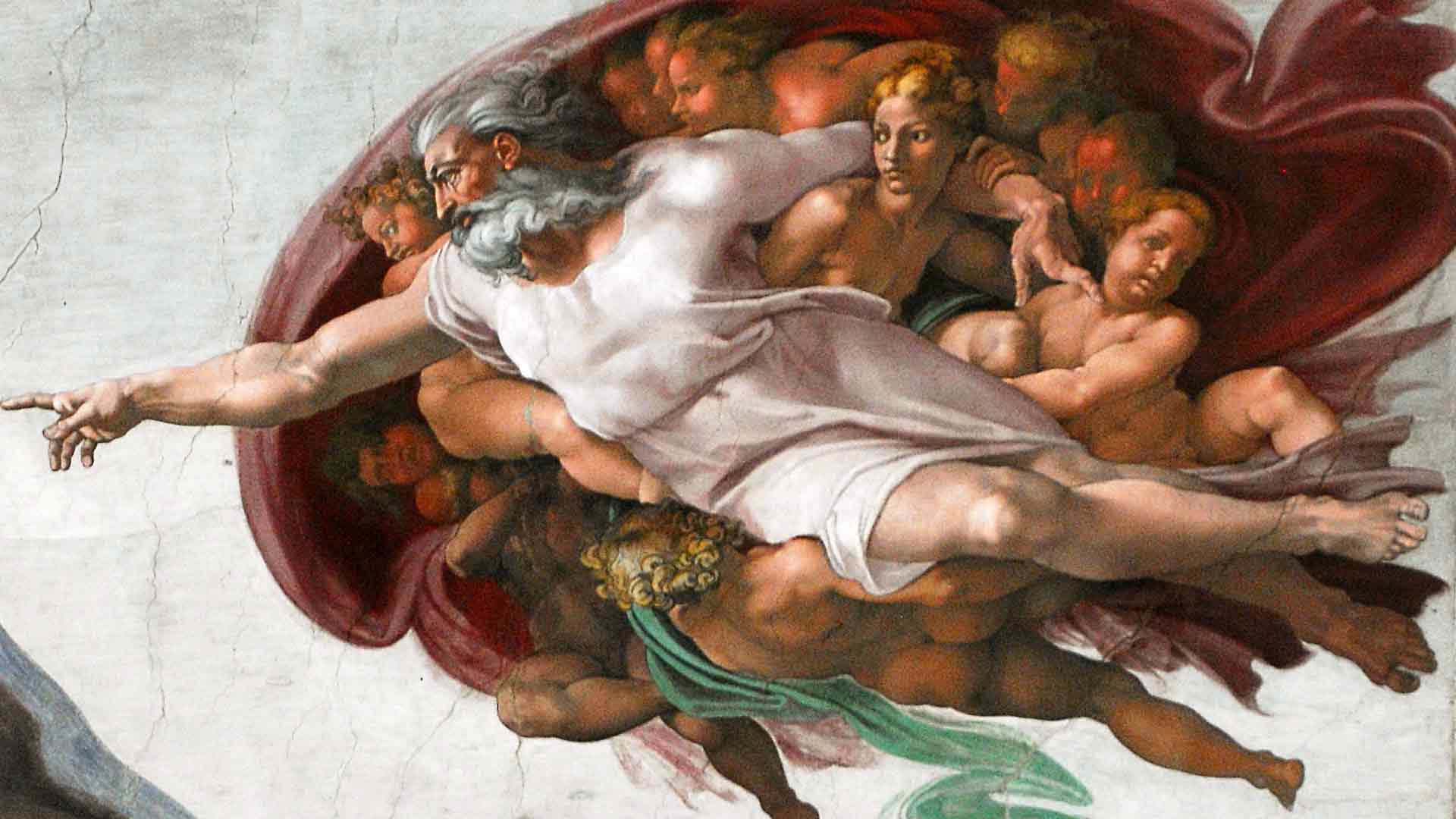
(born March 6, 1475, Caprese, Republic of Florence [Italy] —died February 18, 1564, Rome, Papal States)
Michelangelo di Lodovico Buonarroti Simoni │ Italian Renaissance sculptor, painter, architect, and poet who exerted an unparalleled influence on the development of Western art.
...Michelangelo was considered the greatest living artist in his lifetime, and ever since then he has been held to be one of the greatest artists of all time.
c. 1508-1512
The Sistine Chapel Ceiling │ fresco painting details (two), c.1508-12, by Michelangelo, Vatican Museums, Rome, Italy. This painting represents stories in the Christian Bible from the beginning to the end: The Creation of the Heavens and Earth, The Creation of Adam and Eve (God is in the first detail), The Expulsion from the Garden of Eden, and Noah and the Great Flood.
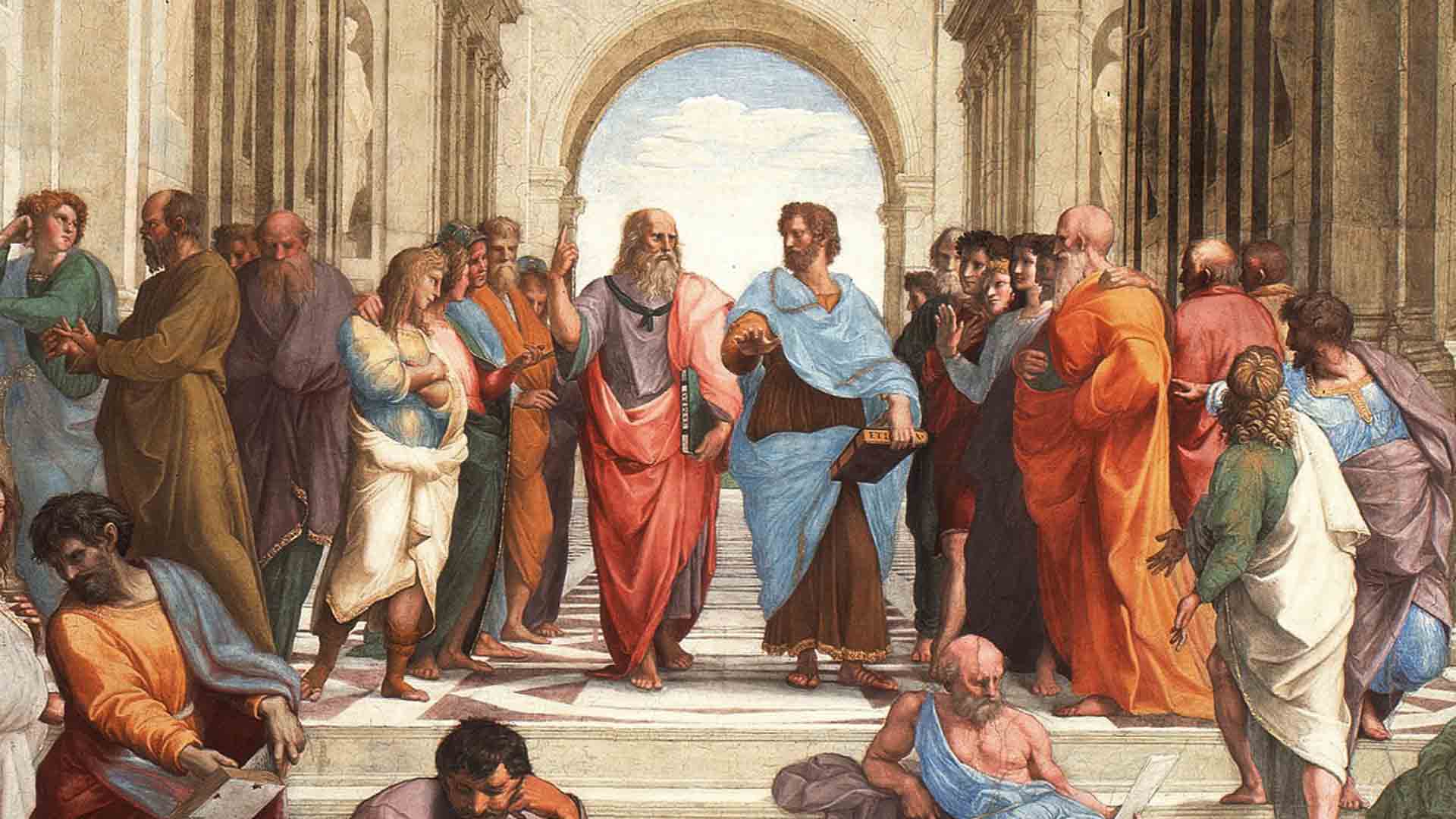
(born April 6, 1483, Urbino, Duchy of Urbino [Italy]—died April 6, 1520, Rome, Papal States [Italy])
Master Painter and Architect of the Italian High Renaissance
Raphael is best known for his Madonnas and for his large figure compositions in the Vatican. His School of Athens in the Stanza della Segnatura, a room in Pope Julius II’s private apartments in the Vatican, is perhaps the most famous of Raphael’s paintings and one of the most significant artworks of the Renaissance.
...His work is admired for its clarity of form and ease of composition and for its visual achievement of the composition and for its visual achievement of the Neoplatonic ideal of human grandeur.
March 28 or April 6, 1483 – April 6, 1520
Considered one of great master painters,
Raphael was an Italian painter and architect
n the High Renaissance.
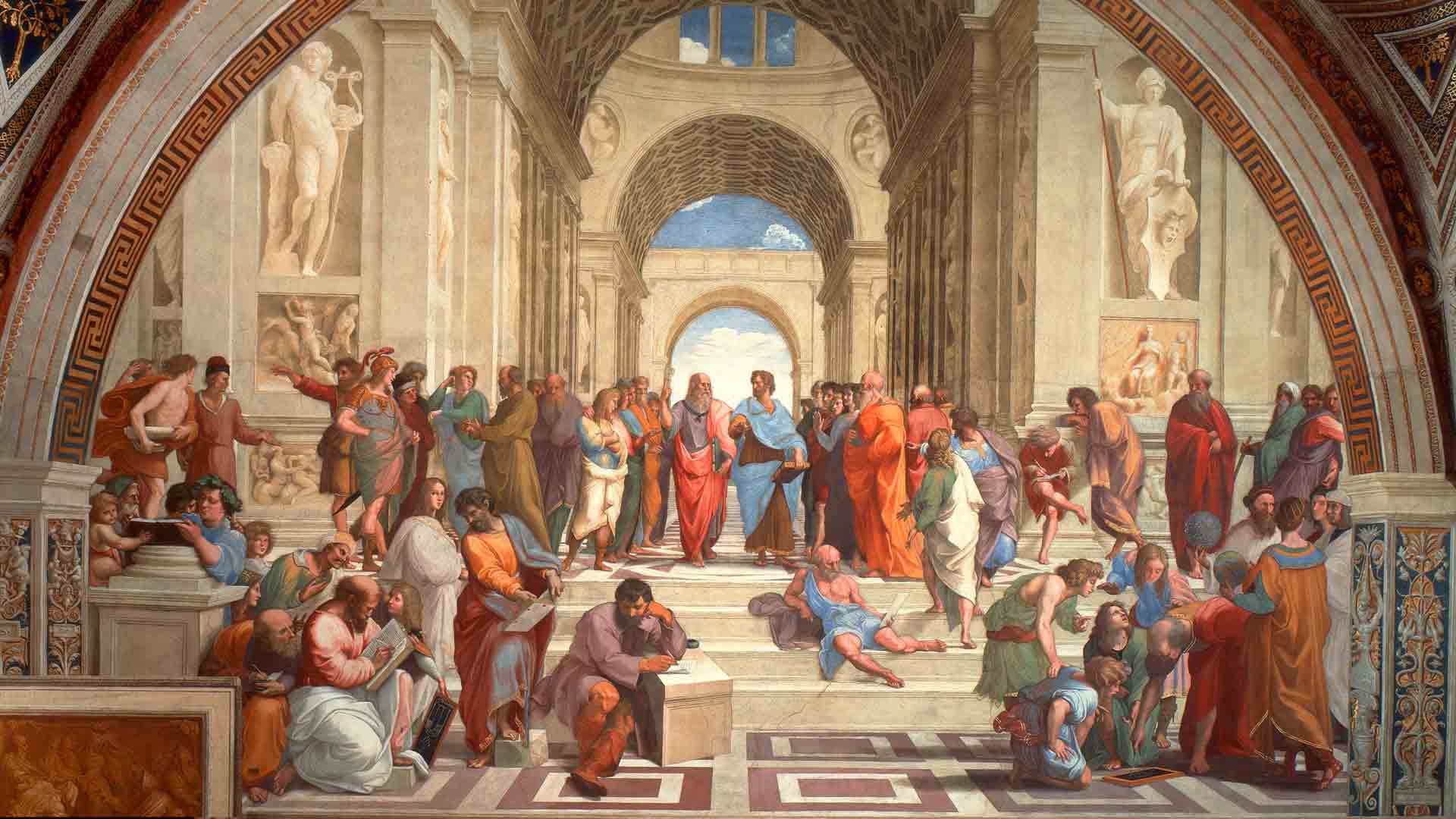
The School of Athens by Raphael represents Philosophy and the union of minds having had a profound impact on civilization. The "ethereal" views of Plato (left-center), who points to the heavens for eternal truth, beauty, wisdom and justice is contrasted with the "practical" views of Aristotle (right-center), carrying his book "Ethics", who believes the same is found in the physical world. Below are presentations of critical analysis of the mindset during the Renaissance.
Course: AP®︎/College Art History:
Unit 5 Lesson 3: Renaissance Art in Europe: The School of Athens.
Smarthistory
Dr. Beth Harris and Dr. Steven Zucker.
Telling the "truth" about what we see is another meaning of art. During the Renaissance, artists became preoccupied with new ways of capturing reality such as the use of linear perspective, and the realism possible through the use of painting techniques. Though not perfect, a great example of "one-point linear perspective" is the "School of Athens" by Raphael (above).
The Magic of Illusion is a series about "how we see, what we see, or what it is we think we see". Al Roker guides us on a journey into the secrets of illusion, utilizing special effects to illustrate the artistic and visionary discoveries of the Renaissance. While Copernicus and Columbus were changing our understanding of the world, the Renaissance masters were dramatically changing the way we see that world. The seven part podcast series uses recent technology to look at old works in new ways. — National Gallery of Art
National Gallery of Art
National Gallery of Art
In 1427, linear perspective is used for the first time.
National Gallery of Art
Forced perspective.
National Gallery of Art
Changing the viewpoint of the fresco destroys the illusion.
National Gallery of Art
Forced perspective.
National Gallery of Art
Foreshortening creates an image that fools the eye.
National Gallery of Art
Perspective is used to create space that isn't really there.
Posted by Vue Fine Art & Design on Saturday, January 6, 2024
Renaissance imaginations were inspired by empty nautilus shells as mysterious treasures from the sea. Times have changed.
Queen Elizabeth I, The Armada Portrait
Portrait of Queen Elizabeth I Secured for the Nation │ The iconic painting, painted circa 1590, commemorates the defeat of the Spanish Armada by the English in 1588, remembered as the most famous conflict of Elizabeth I’s 45-year reign (1558-1603). The inspiration for countless portrayals of Elizabeth I in film and on stage, it is one of the most famous images in British history, capturing a vital moment in the English Renaissance. When she sat for the portrait, Elizabeth I was in her late 50s, and at the height of her power. —Christie's
Renaissance Architecture | style of architecture, reflecting the rebirth of Classical culture, that originated in Florence in the early 15th century and spread throughout Europe, replacing the medieval Gothic style. There was a revival of ancient Roman forms, including the column and round arch, the tunnel vault, and the dome. The basic design element was the order. Knowledge of Classical architecture came from the ruins of ancient buildings and the writings of Vitruvius. As in the Classical period, proportion was the most important factor of beauty; Renaissance architects found a harmony between human proportions and buildings. This concern for proportion resulted in clear, easily comprehended space and mass, which distinguishes the Renaissance style from the more complex Gothic.Con't... Britannica │ Video: Renaissance Architecture
Sculpture │ represented revival of classical models in the Renaissance produced famous sculptures such as Michelangelo's David. using traditional processes with emphasis on the depiction of the human body.
Fresco │
is a technique of mural painting
executed upon freshly laid,
or wet lime plaster.
Water is used as the vehicle
for the dry-powder pigment
to merge with the plaster,
and with the setting of the plaster,
the painting becomes
an integral part of the wall.
The word fresco (Italian: affresco)
is derived from the Italian adjective fresco meaning "fresh",
and may thus be contrasted
with fresco-secco or secco mural painting techniques,
which are applied to dried plaster,
to supplement painting in fresco.
Note: the fresco technique has been employed since antiquity.
However, it is also closely associated with Italian Renaissance painting.
Con't...
Wikipedia
Video: Michelangelo & The Science of Fresco Painting | Chemistry Meets Art │ PBS Digital Studios
Oil painting │ painting in oil colours, a medium consisting of pigments suspended in drying oils. The outstanding facility with which fusion of tones or colour is achieved makes it unique among fluid painting mediums; at the same time, satisfactory linear treatment and crisp effects are easily obtained. Opaque, transparent, and translucent painting all lie within its range, and it is unsurpassed for textural variation. Con't... Encyclopedia Britannica │ Video: How its Made │ Video Below: (History of) Oil Paint │ Philinthecircle
Pencil │ from Old French pincel, from Latin penicillus a "little tail" originally referred to an artist's fine brush of camel hair, also used for writing before modern lead or chalk pencils. Though the archetypal pencil was an artist's brush, the stylus, a thin metal stick used for scratching in papyrus or wax tablets, was used extensively by the Romans and for palm-leaf manuscripts. Discovery of graphite deposit As a technique for drawing, the closest predecessor to the pencil was Silverpoint until in 1565 (some sources say as early as 1500), a large deposit of graphite was discovered on the approach to Grey Knotts from the hamlet of Seathwaite in Borrowdale parish, Cumbria, England. This particular deposit of graphite was extremely pure and solid, and it could easily be sawn into sticks. The usefulness of graphite for pencils was discovered as well, but graphite for pencils had to be smuggled. The news of the usefulness of these early pencils spread far and wide, attracting the attention of artists all over the known world, Because graphite is soft, it requires some form of encasement. Graphite sticks were initially wrapped in string or sheepskin for stability. England would enjoy a monopoly on the production of pencils until a method of reconstituting the graphite powder was found in 1662 in Italy. However, the distinctively square English pencils continued to be made with sticks cut from natural graphite into the 1860s. The town of Keswick, near the original findings of block graphite, still manufactures pencils, the factory also being the location of the Cumberland Pencil Museum. The meaning of "graphite writing implement" apparently evolved late in the 16th century. Con't... Wikipedia │ The Metropolitan Museum of Art │ Video: History of the Pencil │ Utterly Amazing - The Web Series
NEXT: The 17th century Baroque and 18th century Rococo periods in art history
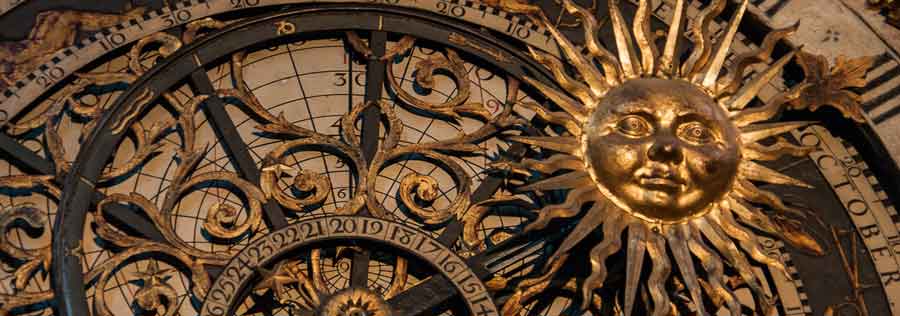
Below, is a small sample of
information links
coordinated with
video playlists.
Each link and video thumbnail takes you to the category on the Resource page.
Once there, activate the links.
Resources
Creative Commons Public Domain
0 1.0 Universal 0 1.0) License